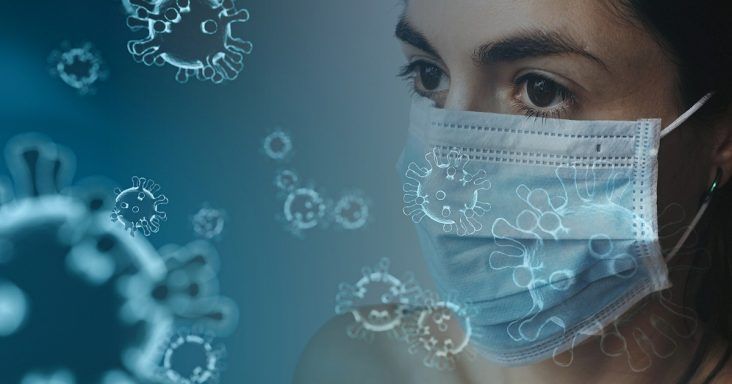UAMS modeling shows Arkansas’ active COVID-19 infections could reach 175,000
by June 13, 2020 6:05 pm 45,805 views

Modeling recently prepared and presented by the University of Arkansas for Medical Sciences shows that new COVID-19 cases in Arkansas could reach around 1,350 per day by Sept. 27, with around 3,100 hospitalizations by October.
That modeling follows an update by the closely watched Institute for Health Metrics and Evaluation (IHME) at the University of Washington which shows pandemic deaths in Arkansas could reach 1,650 by Oct. 1.
The UAMS numbers, presented during an employee town hall by Dr. Mark Williams, dean of the Fay W. Boozman College of Public Health at the University of Arkansas for Medical Sciences, also show the state could have just under 1,000 ICU beds with COVID-19 patients and around 600 ventilators in use. The estimated rise would not exceed capacity. The Arkansas Department of Health has reported 9,111 hospital beds in the state and 896 ventilators. What is unknown is if bed and ventilator capacity will be exceeded in a region in the state.
Active infections in the state could rise to between 170,000-175,000 in early to mid-October, according to the UAMS estimate.
As of Friday (June 12), there have been 2,896 new known COVID-19 cases reported in the previous week (June 5-June 12), which is 33.5% of all reported cases since the pandemic began March 11. Friday’s (June 12) COVID-19 report included 731 new known cases, the highest number of new cases in a 24-hour period. Known COVID-19 cases in Arkansas totaled 11,547 on Friday, up from 10,816 on Thursday. The number of deaths rose from 171 to 176. The number of COVID patients hospitalized in Arkansas was 203 on Friday, up from 187 on Thursday. There are 49 patients on ventilators, up from 45 on Thursday.
The IHME modeling estimates 45.12 deaths and 5,587 new cases per day by Oct. 1. The modeling, which has been revised many times since the pandemic began, shows the need for hospital beds peaking Sept. 26 at 1,372 hospitalizations and 360 COVID-19 patients on ventilators. The modeling also shows 397 ICU beds will be needed for COVID-19 patients by Sept. 26, two more than the 395 beds that IHME estimates are in Arkansas.
Joe Thompson, director of the Arkansas Center for Health Improvement and former Arkansas Surgeon General, told Talk Business & Politics that modeling is important to follow, but the estimates will change. He said modeling assumptions likely “have more to do with about how many people are wearing masks at Walmart or Home Depot or Lowes.” The key takeaway from the UAMS, IMHE and other models is that they point “to higher deaths and hospitalizations than we are now discussing.”
“Under almost every model, things will get significantly worse unless we change our individual behavior in public spaces,” he said.
Thompson said there are three reasons the public and political leaders are not always willing to discuss or accept the potential for the virus impact escalating. The first is the virus is “an invisible threat” and hard to understand.
“We’ve never been faced with a pandemic before. … This is a virus that’s never been seen by anyone’s immune system in Arkansas,” Thompson said.
Another reason the topic is not always welcome is the independent nature of many in Arkansas, with Thompson noting that “this has become a politicized event.” The third reason modeling estimates are sometimes not followed or discussed is the uncertainty in trying to predict the future impact of the virus.
Gov. Asa Hutchinson said he was not aware of the new UAMS modeling, and said previous models from different groups did not mirror reality.
“We take this very seriously and we like to get a lot of different information. Historically, the modeling has not been accurate and the modeling is what led us early on to look at War Memorial Stadium as potential hospital expansion opportunity for us. And obviously that has proven to be unnecessary,” he said during a brief Saturday interview.
He did say modeling is useful because with the recent spike in new COVID-19 cases, “we take worse-case scenarios into consideration and be prepared in terms of capacity building.”
The governor also said national politicization of the virus that results in some people not observing health guidelines is “not helpful. This is a public health issue first and not a political issue.” He reiterated that his “key strategy” in responding to the virus and keeping the economy open is encouraging Arkansans to wear masks, practice social distancing and follow other health guidelines.
Talk Business & Politics editor-in-chief Roby Brock contributed to this report.
